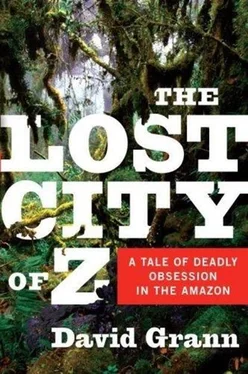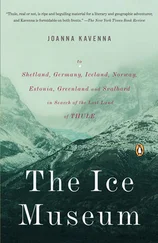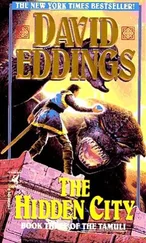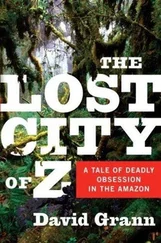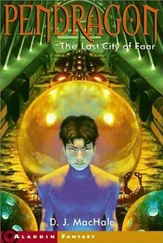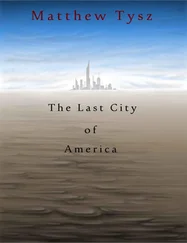A moment later, he pointed to a fleet of diesel-belching trucks heading in the opposite direction, carrying sixty-foot logs.
“Only the Indians respect the forest,” Paolo said. “The white people cut it all down.” Mato Grosso, he went on, was being transformed into domesticated farmland, much of it dedicated to soybeans. In Brazil alone, the Amazon has, over the last four decades, lost some two hundred and seventy thousand square miles of its original forest cover-an area bigger than France. Despite government efforts to reduce deforestation, in just five months in 2007 as much as two thousand seven hundred square miles were destroyed, a region larger than the state of Delaware. Countless animals and plants, many of them with potential medicinal purposes, have vanished. Because the Amazon generates half its own rainfall through moisture that rises into the atmosphere, the devastation has begun to change the region's ecology, contributing to droughts that destroy the jungle's ability to sustain itself. And few places have been as ravaged as Mato Grosso, where the state governor, Blairo Maggi, is one of the largest soybean producers in the world. “I don't feel the slightest guilt over what we are doing here,” Maggi told the New York Times in 2003. “We're talking about an area larger than Europe that has barely been touched, so there is nothing at all to get worried about.”
The latest economic boom, meanwhile, has produced another of the Amazon's convulsions of violence. The Brazilian Transport Ministry has said that loggers along BR-163 employ “the highest concentration of slave labor in the world.” Indians are frequently driven off their land, enslaved, or murdered. On February 12, 2005, while Paolo and I were making our journey into the jungle, several gunmen, allegedly on the payroll of a rancher in the state of Pará, approached a seventy-three-year-old American nun who defended the rights of Indians. As the men aimed their guns, she removed her Bible and began to read from the Gospel of Saint Matthew: “Blessed are those who hunger and thirst for justice, for they shall be satisfied.” The gunmen unloaded six bullets into her, leaving her body facedown in the mud.
James Petersen, the distinguished scientist from the University of Vermont who had trained the archaeologist Michael Heckenberger and had been extremely helpful in planning my trip, told me when we had last spoken, a few months earlier, that he was excited because he was heading into the Amazon to conduct research near Manaus. “Maybe you can visit me after the Xingu,” he said. That would be wonderful, I responded. But I soon discovered that in August, while he was with the Brazilian archaeologist Eduardo Neves at a restaurant in a village along the Amazon River, a pair of bandits, allegedly working for a former police officer, stormed in to rob the place. One of the thieves opened fire, hitting Petersen in the stomach. He fell to the ground and said, “I can't breathe.” Neves told him he would be okay, but by the time they arrived at a hospital, Petersen had died. He was fifty-one years old.
From BR-163, we veered onto a smaller dirt road, which went east, toward Bakairí Post. We passed close to where Fawcett had stayed with the cattle rancher Galvão, and we decided to see if we could find his manor. In letters, Fawcett had said that the ranch was known as Rio Novo, and that name was marked on several current maps. After nearly four hours of bone-jarring bumps, we came upon a rusty sign at a fork in the road-“Rio Novo”-with an arrow pointing left.
“Look at that,” Paolo said.
We crossed a wobbly, wooden-slatted bridge over a river. The bridge creaked under the weight of the truck, and we looked down at the torrent of water, fifty feet below.
“How many mules and horses did the coronel have?” Paolo asked, trying to picture Fawcett's crossing.
“A dozen or so,” I said. “According to his letters, Galvão replaced some of the weakest animals and gave him a dog… which supposedly returned to the farm, several months after Fawcett vanished.”
“It wandered back on its own?” Paolo asked.
“That's what Galvão said. He also said something about some swallows he saw rise from the forest in the east, which he thought had to be some kind of sign from Fawcett.”
For the first time, we entered a swath of dense forest. Though there was no farm in sight, we came across a mud hut with a thatched roof. Inside was an old Indian sitting on a tree stump with a wooden cane in his hand. He was barefoot and wore dusty slacks without a shirt. Behind him, hanging on the wall, was the skin of a jaguar and a picture of the Virgin Mary. Taukane asked him, in the Bakairí language, if there was a cattle-breeding ranch known as Rio Novo. The man spit when he heard the name and waved his cane toward the door. “That way,” he said.
Another Indian, who was younger, appeared and said that he would show us the way. We got back in the car and drove down an overgrown path, the branches clapping against the windshield. When we couldn't drive any farther, our guide hopped out, and we followed him through the forest as he slashed at the creepers and vines with a machete. Several times he paused, studied the tops of the trees, and took a few paces east or west. Finally, he stopped.
We looked around-there was nothing but a cocoon of trees. “Where's Rio Novo?” Paolo asked.
Our guide lifted his machete over his head and slammed it into the ground. It hit something hard. “Right here,” he said.
We looked down and, to our disbelief, saw a row of cracked bricks.
“This is where the entrance to the manor used to be,” the guide said, adding, “It was very big.”
We began to fan out in the forest, as rain started to fall again, looking for signs of the great Galvão farm.
“Over here!” Paolo cried. He was a hundred feet away, standing by a crumbling brick wall nestled in vines. The farm had been consumed by jungle in just a few decades, and I wondered how actual ancient ruins could possibly survive in such a hostile environment. For the first time, I had some sense of how it might be possible for the remnants of a civilization simply to disappear.
WHEN WE RETURNED to the road, the sun had begun to set. In our excitement, we had lost track of the time. We hadn't eaten since five-thirty in the morning and had nothing in the truck except a warm bottle of water and some crackers. (Earlier in the trip we had devoured my packets of freeze-dried food, Paolo saying, “Astronauts really eat this stuff?”) As we drove through the night, lightning flashed in the distance, illuminating the emptiness around us. Taukane eventually nodded off, and Paolo and I became engaged in what had become our favorite diversion-trying to imagine what had happened to Fawcett and his party after they left Dead Horse Camp.
“I can see them starving to death,” Paolo, who seemed focused on his own hunger, said. “Very slowly and very painfully.”
Paolo and I were not alone in trying to conjure a denouement to the Fawcett saga. Dozens of writers and artists had imagined an ending where none existed, like the earlier cartographers who had conceived of much of the world without ever seeing it. There were radio and stage plays about the mystery. There was the screenplay “Find Colonel Fawcett,” which was later the extremely loose basis for the 1941 movie Road to Zanzibar, with Bing Crosby and Bob Hope. There were comic books, including one in the Adventures of Tintin series; in the story, a missing explorer based on Fawcett rescues Tintin from a poisonous snake in the jungle. (“Everybody thinks you're dead,” Tintin tells the explorer, who says, “I've decided never to return to civilization. I'm happy here.”)
Fawcett also continued to inspire quest novelists. In 1956, the popular Belgian adventure author Charles-Henri Dewisme, who used the pseudonym Henry Verne, wrote Bob Moran and the Fawcett Mystery. In the novel, the hero Moran investigates the Amazon explorer's disappearance, and although he fails to reveal what happened to him, he uncovers the lost City of Z, making “Fawcett's dream come true.”
Читать дальше
Конец ознакомительного отрывка
Купить книгу
